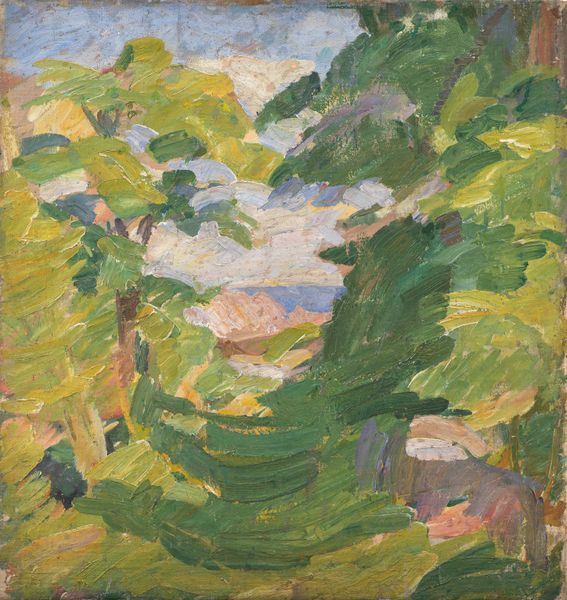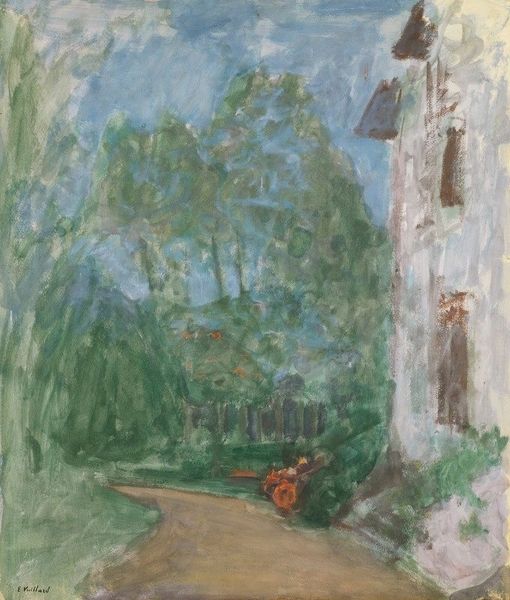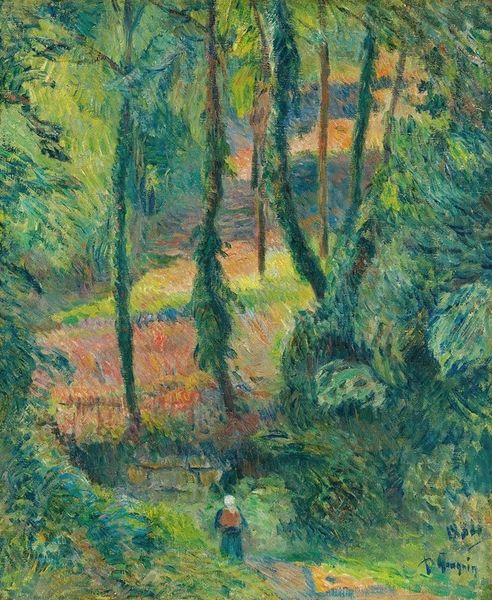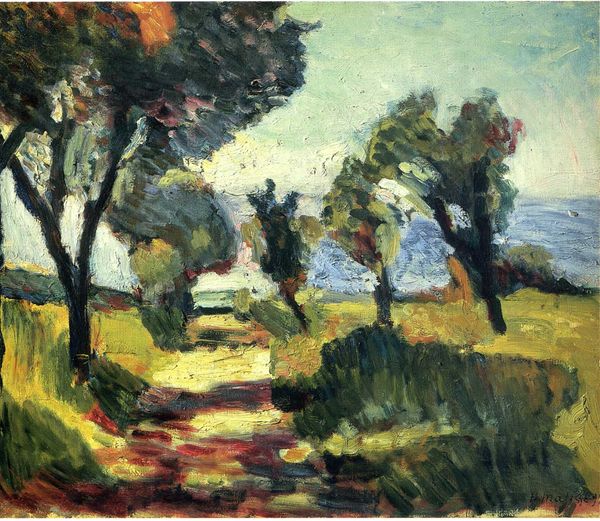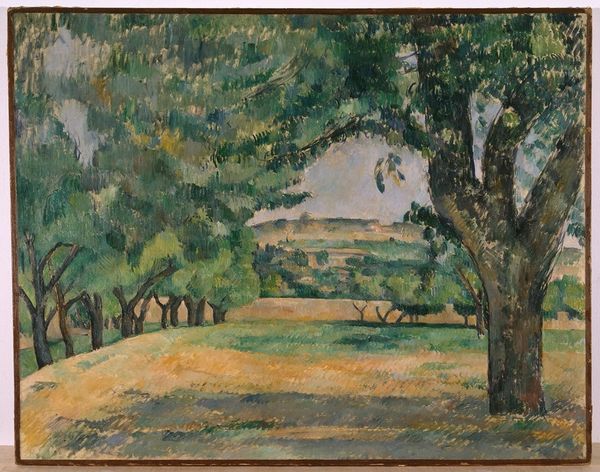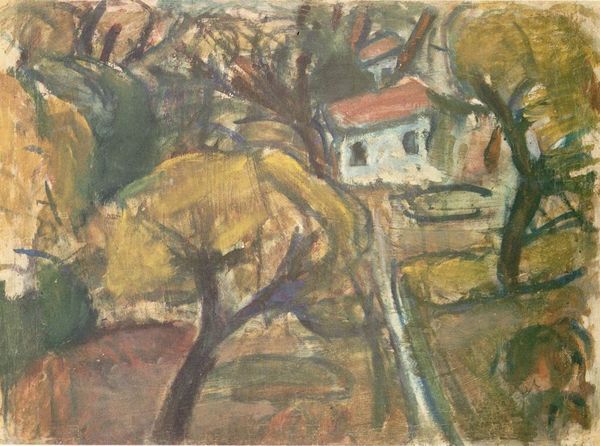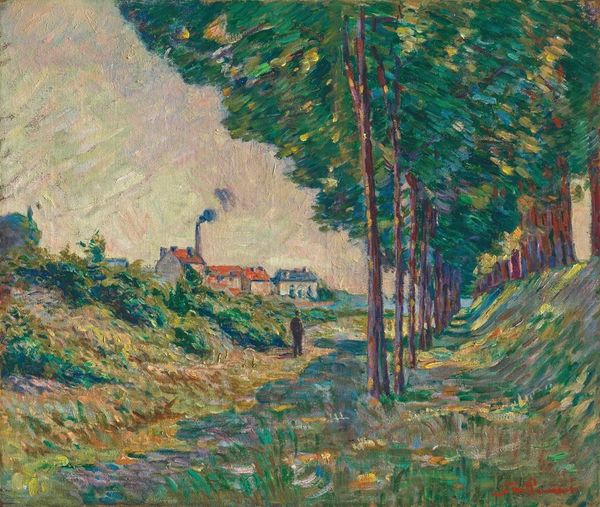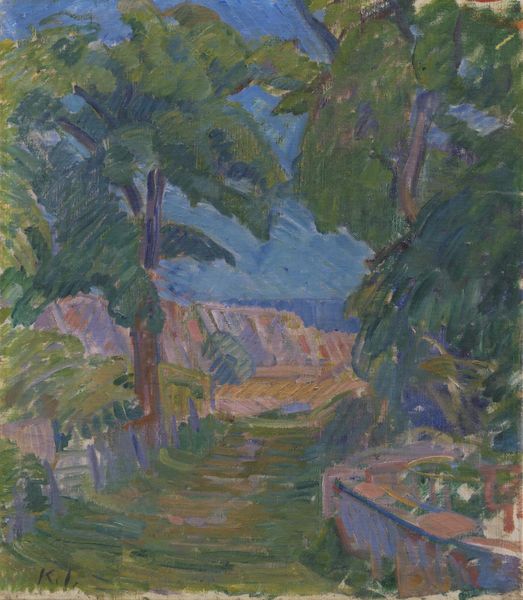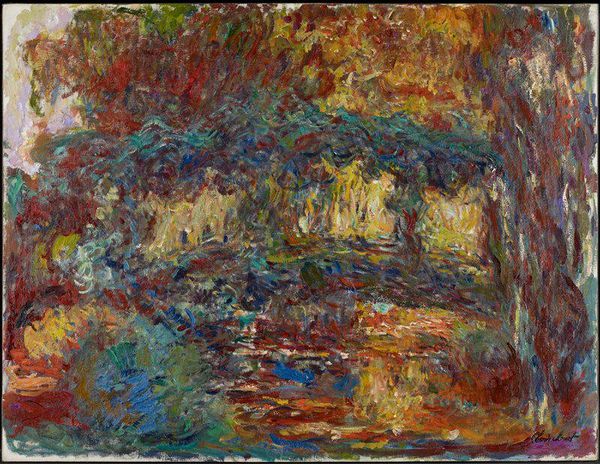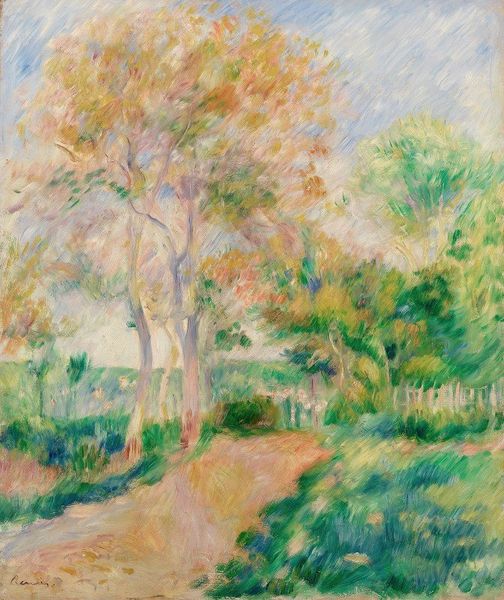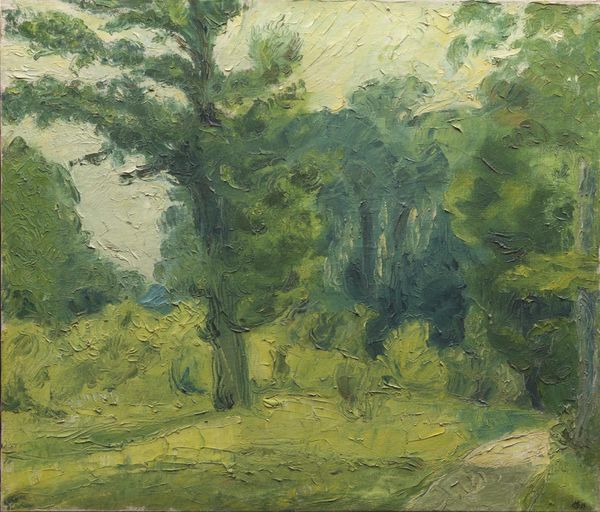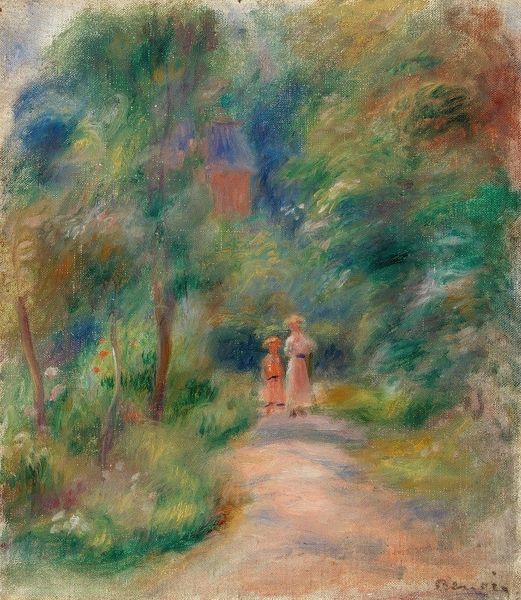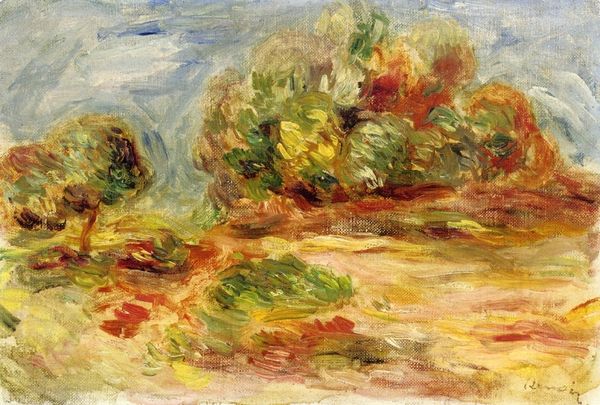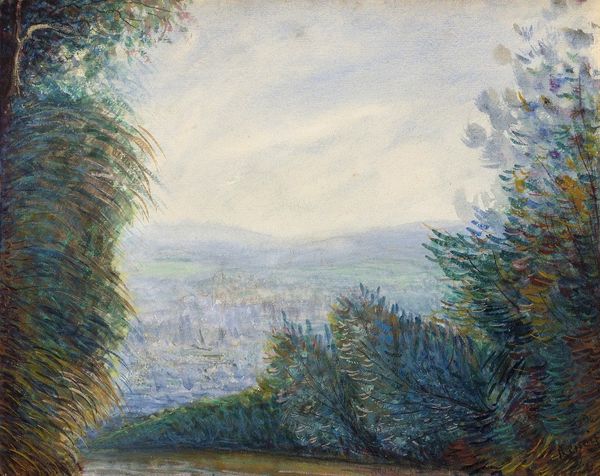
painting, plein-air, oil-paint
#
painting
#
impressionism
#
plein-air
#
oil-paint
#
landscape
#
oil painting
Copyright: Public Domain: Artvee
Paul Cézanne painted "La Route tournante en sous-bois" with oil on canvas, and within its vibrant brushstrokes, the motif of the path emerges as a compelling symbol. Consider how paths have echoed through art history. From ancient Roman roads signifying power and conquest to the winding paths in Romantic landscapes evoking personal journeys, the path is laden with meaning. Cézanne’s path, however, meanders indistinctly into the forest, a pictorial trope we see emerging in the early 19th century to evoke a sense of the unknown and a yearning for the sublime. The twisting road motif suggests a journey—perhaps not just a physical one, but an emotional or intellectual quest. This is not a direct route, but one shrouded in ambiguity. Symbolically, the path is not merely a passage but a representation of life's unfolding, imbued with uncertainty. It invites the viewer to project their own narrative. The viewer feels a sense of being drawn into the depths of the subconscious. The symbol of the path in art continually evolves, yet retains its primal ability to engage us, echoing our deepest desires, fears, and hopes for the future.
Comments
No comments
Be the first to comment and join the conversation on the ultimate creative platform.
